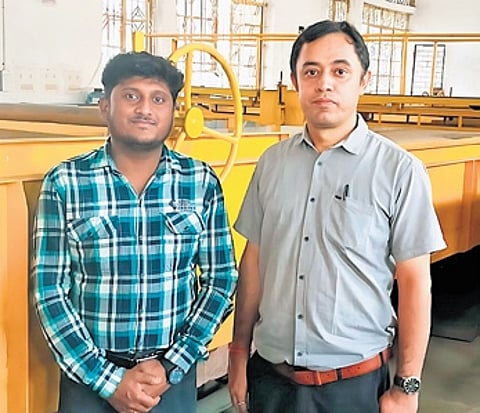

ROURKELA: A research team from the Civil Engineering department of the National Institute of Technology-Rourkela (NIT-R) has successfully used machine learning models and statistical tools to accurately evaluate the quality of groundwater in Sundargarh district for irrigation sustainability and agriculture planning.
Assistant professor of the Civil Engineering department Anurag Sharma along with his research scholar Souvick Kumar Shaw has used advanced data analysis techniques to examine key water quality parameters and their variations across different parts of the district.
Machine learning algorithms consisting of five tools have been implemented in the project for future prediction of the evaluated irrigation water quality indices from available physiochemical groundwater quality data of Sundargarh between 2014 and 2021. These are basically statistical and predictive analytics techniques for exhibiting relationship between the response and explanatory variables by application of mathematical coding in various platforms.
Sources said there is rampant groundwater extraction in the industrial and mining district of Sundargarh where surface water availability is limited. Overuse of groundwater is leading to a drop in its quantity and quality. There is a possibility of poor water quality affecting crop yield and soil fertility in the long run.
The study examined groundwater samples collected from 360 wells across Sundargarh. The samples were tested for various chemical properties including salts and minerals, both responsible for influencing soil and crop health. Machine learning models and statistical tools were applied to predict water quality trends and understand how conditions have changed from 2014 to 2021.
The findings indicate that groundwater in the southern, southwestern and eastern parts of Sundargarh including areas around Rangiamunda, Lephripara and Putudihi is considered to be fit for irrigation. These regions showed stable groundwater quality with acceptable levels of dissolved salts and minerals along with permissible range of other chemical components.
However, the western and central parts of the district, particularly Krinjikela, Talsara and Kutra and parts of Sundargarh town, have groundwater with comparatively higher concentrations of total dissolved solids and certain cations like sodium, calcium and magnesium, which may affect soil and crop productivity. If not managed properly, these conditions could lead to declining yields of potato and cucumber crops.
The research identified sodium, chloride, sodium adsorption ratio, Kelly’s ratio , permeability index (PI) and potential salinity (PS) as the most significant water quality parameters that affect the variability of groundwater quality in Sundargarh.
The study found that important water quality indicators have been showing consistent patterns of increase/decrease over time, suggesting the affected regions may experience further decline in groundwater suitability.
Sharma said, “Machine learning allows us to move beyond static assessments and develop predictive models that help farmers and policy makers make proactive decisions. By integrating data-driven insights with traditional water management practices, we can create a more sustainable approach to irrigation and agricultural planning.”